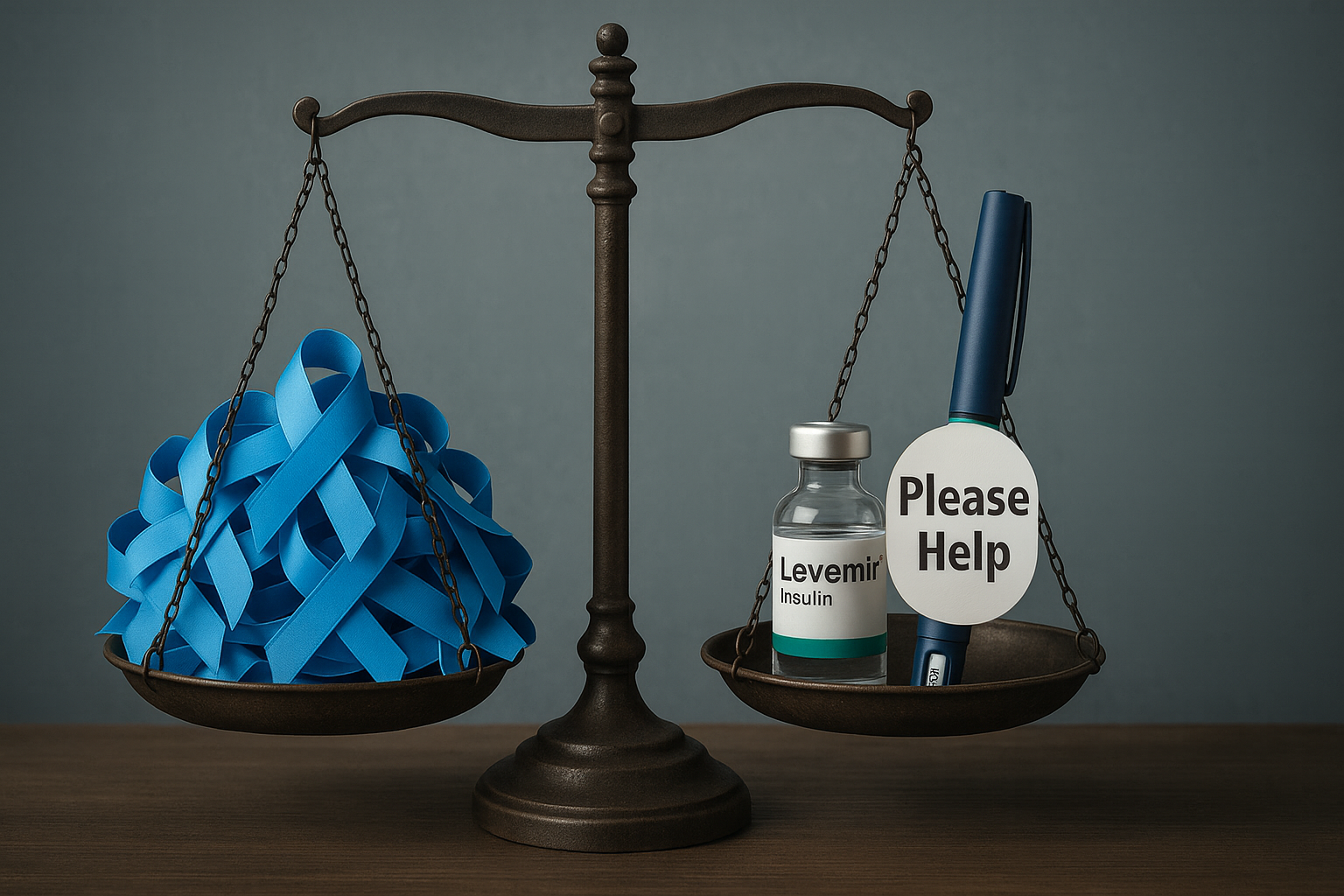As the Diabetes Turns
See this picture? I think this was about three weeks ago, may have been a little less but I can't be sure - because I'm exhausted. Anyway, a few weeks ago I was awoken by a screeching DexCom G4 that had this to show me. Since this night, Arden's BGs have been anomalous. They are low for no reason, our insulin to carb ratios aren't correct and every management tool that we use is backfiring. For example, last night Arden ate an entire bagel that didn't require insulin but we of course would have never eaten a bagel without insulin - so her BG got very low. Last Saturday after Arden's basketball game, her BG was 24, yea that was a little scary. We bolus the equivalent of a juice box prior to Arden's participation in competitive sports to combat her adrenaline, basketball is interesting because without the bolus before the game she gets very high but with the bolus, her level (During the game) stays very stable but she needs to eat the minute the adrenaline is gone or the bolus will cause her to get a little low (In the 70s) . Last Saturday however... 24.
Arden has been low each afternoon following lunch and no, before bed BG, seems trustworthy. I've been up all night for, well, I think about three weeks. I'm beginning to get foggy and I can't escape feeling drained and endlessly tired.
Arden isn't sick, her diet hasn't changed and she hasn't lost weight. Same insulin, same everything - I'm at a complete loss
This will make you laugh. Recently I explained to Arden that one day her hormone levels will change and that her blood glucose will be effected by the change. We spoke about fluctuations that may happen during that time and how we'd handle them.
So the other day she is drinking a juice box for a BG in the 60's that wouldn't budge, when she looks at me super-serioulsy and deadpans, "Maybe its the hormones". I think she was joking...
I'll keep making temporary adjustments to basal rates and boluses until this passes and I don't want to overdo it because you know this is all going to revert back in the blink of an eye. It's like someone sat on the remote and we are stuck watching a bad soap opera until we can figure out whose leg the remote is under.
The BG of 24 is it's own blog post, I'll write that as soon as I can get some rest. Excuse any typos, odd commas or strange turns of phrase... my eyes were closed during much of this.
VIDEO: Kris Freeman on NBC's Olympic Zone
This piece begins with host Sibila Vargas saying, "For American cross country skier Kris Freeman, Sochi represents his fourth career Olympics where he'll not be only representing the United States, but also diabetic athletes everywhere."
Immediately after Sibila finished, Arden exclaimed, "That's me!"
Originally aired on NBC's 'The Olympic Zone', Feb 10, 2014 - Channel 4 NY
After the interview, Arden told us that she shared with her class today that she knew someone who was competing in the Olympics. Arden explained to her friends that the man she knew had type I diabetes and that he wore the same insulin pump and CGM as she.
I can't thank Kris enough for the example that he is setting for my daughter, and for everyone whose life is touched by type I diabetes. If I had a gold medal Kris... I'd give it to you.
Thank you to NBC for this interview, it means so much... to so many.
Study: Effects of Type I Diabetes on a Young Child's Brain
I'm posting chunks from a recent study that can be found on Diabetes Care (American Diabetes Association) and blurbs from a corresponding article about the study, from Reuters Health. Study text is in the left column, Reuters on the right.
I don't believe that this information should lead you to more worry (Though it likely will) but I do believe that the parents of young children, who live with type I diabetes, should be aware of the study findings. These articles are not fun to read for many reasons, but I found them to be full of the kind of information that helps me to (hopefully) avoid long-term complications for Arden.
If you are currently struggling with BGs or generally feeling down about type I - seriously - bookmark this and save it for a better day - even though you'll likely not find much of the information surprising, it is a somber reminder. My thoughts, are as always, with you and your families. - Scott
Links to the complete articles are included below, at the end of each column.
“While many children may not show overt complications from these differences in neural structure, some do have difficulties with processing speed, memory, learning, and complex cognitive functions”
Alterations in White Matter Structure in Young Children With Type 1 Diabetes
Study Objective: To investigate whether type 1 diabetes affects white matter (WM) structure in a large sample of young children.
Results: Between-group analysis showed that children with type 1 diabetes had significantly reduced axial diffusivity (AD) in widespread brain regions compared with control subjects. Within the type 1 diabetes group, earlier onset of diabetes was associated with increased radial diffusivity (RD) and longer duration was associated with reduced AD, reduced RD, and increased fractional anisotropy (FA). In addition, HbA1c values were significantly negatively associated with FA values and were positively associated with RD values in widespread brain regions. Significant associations of AD, RD, and FA were found for CGM measures of hyperglycemia and glucose variability but not for hypoglycemia. Finally, we observed a significant association between WM structure and cognitive ability in children with type 1 diabetes but not in control subjects.
Conclusions: These results suggest vulnerability of the developing brain in young children to effects of type 1 diabetes associated with chronic hyperglycemia and glucose variability.
The entire study can be found here, it includes a significant introduction, an outline of research design and methods, as well as a description of the participants, CGM use in the study, data analysis and much more.
Chronic hyperglycemia, glucose variability may affect children's brains
By Lorraine L. Janeczko
NEW YORK (Reuters Health)
"Chronic hyperglycemia and glucose variability could impact the brains of young children with type 1 diabetes, new research suggests."
"In what the authors call the largest study to date investigating white matter structure in young children with type 1 diabetes, diabetic children had widespread and significant differences in their white matter microstructure compared with nondiabetic controls."
"Compared to controls, children with type 1 diabetes had significantly reduced axial diffusivity (AD) in their frontal, temporal, parietal, and occipital lobes. Earlier diabetes onset was associated with increased radial diffusivity (RD), and longer duration was associated with reduced AD, reduced RD, and increased fractional anisotropy (FA) (all P<0.05)."
"While many children may not show overt complications from these differences in neural structure, some do have difficulties with processing speed, memory, learning, and complex cognitive functions which can be associated with poor neuronal function," she said.
"I believe that these effects could be improved with good glycemic control, although an empirical investigation would help to answer this question. It seems that in the quest to prevent hypoglycemia in children with diabetes, there has been an increase in hyperglycemia in many children. It may be the case that a balance needs to be struck between the two extremes, perhaps with better methods of glucose monitoring."
Helping Children With Diabetes Gain Independence
Part 5: Taking It One Moment at a Time
The word independence literally means, “Freedom from outside control or support.” But when we use it to describe a child who lives with type 1 diabetes, the word takes on a much deeper meaning.
I wanted to say, “Children struggle,” but in all honesty, all people struggle to be themselves every day. We are influenced by so many outside pressures that I often wonder if any of us are really being who we are. On any given day I can feel too short, too fat, too old or just not smart enough. I worry that my affections won’t be reciprocated, that I am not being a good parent, husband and son. In the past, my concern about loved ones’ reactions have stopped me from telling them how I truly feel. Yet if you asked me to describe myself and the level of independence that I felt during that time in my life, I would have told you that I was not bothered by what other people thought of me, that I didn’t feel the pressure – but of course I did.
As I sit here and write to you, I realize that I felt all of those things when I was younger and I wasn’t wearing an insulin pump or a continuous glucose monitor. I didn’t have to stop and check my blood glucose all day, people never felt obliged to tell me what to eat and I never once thought that I may pass out from not paying attention to my moment-to-moment health. Young Scott was living a pretty easy life, and yet he still felt the proverbial weight of the world.
So how the heck are we going to teach our children with diabetes to feel independent? I think the answer to that question is, one moment at a time.
I could have written a series of blog posts about helping children with diabetes gain independence through any number of experiences. I believe that people, young and old, have potential and that all they need is patient loving people to surround them with quiet strength and support. Sure, sometimes it feels good to be told that someone has your back, but often it feels better to just know. Then when life happens, alone or together, we have the inner strength to shoulder what’s coming our way. In time, with maturity and practice, we begin to believe in ourselves the way that our loved ones believe in us.
So does technology help to build independence for children with type 1 diabetes? Absolutely it does! Does it do it overnight or over the course of a single year? No. Independence is a form of maturity and the process towards becoming a fully realized person is a long one. That kind of firm base is built one experience at a time and not every step taken is a step in the correct direction. Each blood glucose check in public will build confidence. Every low blood glucose conquered is a step in the right direction. There will be moments that don’t go as planned, but don’t think of them as failures, think of them as perspective for the successes. You can’t appreciate success without knowing failure, at least not to the degree that it requires to build maturity, and none of this can happen if we are being sheltered. I know as well as you do that having a child with type 1 diabetes is different and at times scary. That’s why I added technology to our daily routine; so I could give Arden the personal space that she needs to grow while protecting, as best as the situation allows, her health and safety.
This post is part of a six part series that I originally wrote for the Suite D Blog, which is operated by Insulet. Insulet is the company responsible for Arden's insulin pump, the Omnipod. Please know that I was compensated for my writing in an amount that would be considered standard for freelance blogging. My family pays for Arden's Omnipods with insurance and out of pocket cash. My writing for Insulet has no impact on my opinions or the information that I share here or anywhere online.
Diabetes in the News
Introducing Google's smart contact lens project
Prototype from Google's Smart Contact Lens Project
“We’re in discussions with the FDA, but there’s still a lot more work to do to turn this technology into a system that people can use.”
from Google: "We’re now testing a smart contact lens that’s built to measure glucose levels in tears using a tiny wireless chip and miniaturized glucose sensor that are embedded between two layers of soft contact lens material. We’re testing prototypes that can generate a reading once per second.
We’re also investigating the potential for this to serve as an early warning for the wearer, so we’re exploring integrating tiny LED lights that could light up to indicate that glucose levels have crossed above or below certain thresholds.
It’s still early days for this technology, but we’ve completed multiple clinical research studies which are helping to refine our prototype. We hope this could someday lead to a new way for people with diabetes to manage their disease." full story
Olympic cross-country skier Freeman masters mountains, diabetes
Freeman decided then that he was going to try to compete in 2014, even though he would be 33 at the time.
Kris Freeman was diagnosed at age 19 with Type 1 diabetes
from Sports Illustrated: "Kris Freeman was approaching the 12th kilometer of the 30 km pursuit at the 2010 Vancouver Olympics when he noticed the first sign: An uphill climb seemed strangely difficult. He had been skiing well to that point, and had moved into a top 20 position. Then his body started shaking and wobbling. Freeman knew that roughly a kilometer ahead he had a coach waiting for him with a sports drink. But before he could make it, he collapsed in the snow." full story
Is there connection between Type 1 diabetes and cleanliness?
Some researchers suspect there may be a connection between Finland’s cleanliness and the incidence of the disease there.
from Washington Post: It may come as a surprise that Finland — one of the least polluted, wealthiest countries, where average life expectancy is among the world’s highest — has the highest rate of Type 1 diabetes. Each year, there are about 58 cases diagnosed per 100,000 children; in the United States there are 24 cases per 100,000, according to the International Diabetes Federation. full story




















